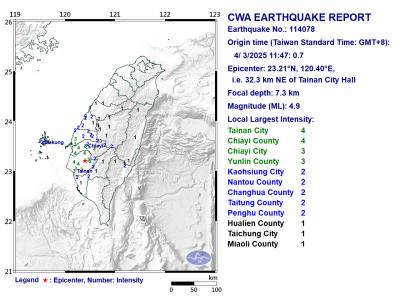Uighur democracy activist Wu’er Kaixi (吾爾開希) yesterday condemned China for its crackdown on Uighur demonstrators, which Beijing said left more than 140 people dead.
Wu’er Kaixi, a Uighur who lives in Taiwan, said he was shocked by the death toll, adding that it showed that “China’s crackdown had been severe.”
“The bloody conflict took place during the confrontation between the police and the protesters. In other words, the demonstration had been peaceful before the Chinese government dispatched police officers to where the Uighurs had gathered,” Wu’er Kaixi said.
“There is no way China can blame the conflict on the demonstrators again,” he said.
Wu’er Kaixi said the death toll reported by the Chinese authorities had already reached 129, but warned that numbers given by Beijing were unreliable.
Lizih (栗智), deputy director of the World Uighur Congress, said the conflict on Sunday night had left 140 people dead and 828 people injured.
Wu’er Kaixi said China could be trying to intimidate Uighurs and the rest of the world by publicizing the death toll, adding that the actual number was probably much higher than official reports said. The crackdown was no different from the crackdown at Tiananmen Square two decades ago, he said.
Wu’er Kaixi said the conflict was a result of ethnic conflict between Uighurs and Han Chinese, adding that China’s attempt to label Uighurs as “terrorists” and their demonstrations as “terrorist attacks” would not help resolve the ethnic conflict.

‘DENIAL DEFENSE’: The US would increase its military presence with uncrewed ships, and submarines, while boosting defense in the Indo-Pacific, a Pete Hegseth memo said The US is reorienting its military strategy to focus primarily on deterring a potential Chinese invasion of Taiwan, a memo signed by US Secretary of Defense Pete Hegseth showed. The memo also called on Taiwan to increase its defense spending. The document, known as the “Interim National Defense Strategic Guidance,” was distributed this month and detailed the national defense plans of US President Donald Trump’s administration, an article in the Washington Post said on Saturday. It outlines how the US can prepare for a potential war with China and defend itself from threats in the “near abroad,” including Greenland and the Panama

A magnitude 4.9 earthquake struck off Tainan at 11:47am today, the Central Weather Administration (CWA) said. The hypocenter was 32.3km northeast of Tainan City Hall at a depth of 7.3km, CWA data showed. The intensity of the quake, which gauges the actual effect of a seismic event, measured 4 in Tainan and Chiayi County on Taiwan's seven-tier intensity scale, the data showed. The quake had an intensity of 3 in Chiayi City and County, and Yunlin County, while it was measured as 2 in Kaohsiung, Nantou County, Changhua County, Taitung County and offshore Penghu County, the data showed. There were no immediate reports of

The Chinese Nationalist Party (KMT) is maintaining close ties with Beijing, the Democratic Progressive Party (DPP) said yesterday, hours after a new round of Chinese military drills in the Taiwan Strait began. Political parties in a democracy have a responsibility to be loyal to the nation and defend its sovereignty, DPP spokesman Justin Wu (吳崢) told a news conference in Taipei. His comments came hours after Beijing announced via Chinese state media that the Chinese People’s Liberation Army’s Eastern Theater Command was holding large-scale drills simulating a multi-pronged attack on Taiwan. Contrary to the KMT’s claims that it is staunchly anti-communist, KMT Deputy

RESPONSE: The government would investigate incidents of Taiwanese entertainers in China promoting CCP propaganda online in contravention of the law, the source said Taiwanese entertainers living in China who are found to have contravened cross-strait regulations or collaborated with the Chinese Communist Party (CCP) could be subject to fines, a source said on Sunday. Several Taiwanese entertainers have posted on the social media platform Sina Weibo saying that Taiwan “must be returned” to China, and sharing news articles from Chinese state media. In response, the Mainland Affairs Council (MAC) has asked the Ministry of Culture to investigate whether the entertainers had contravened any laws, and asked for them to be questioned upon their return to Taiwan, an official familiar with the matter said. To curb repeated